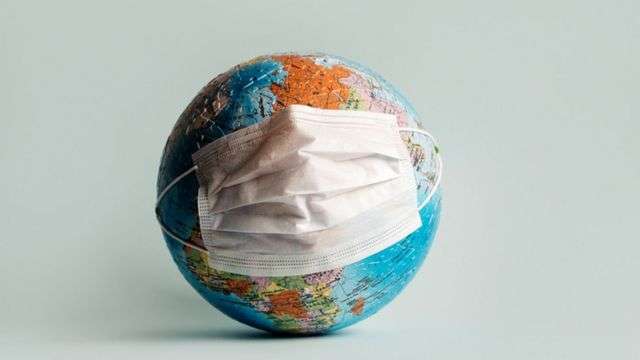The WHO has declared three diseases as “international health emergencies”: polio, COVID-19 and recently the monkeypox or monkeypox. This implies a greater degree of attention from the UN agency for a health situation, which allows a high level of coordination between States and obtaining funds to combat these diseases. In the case of “polio” it was expected that it would be eradicated by the year 2000, however different causes have made it possible for transmission to still be reported in two Asian countries, where it is endemic. COVID-19 was the worst pandemic in the last hundred years, with millions of deaths worldwide. Finally, monkeypox, which had had several epidemic outbreaks in various regions of Africa, jumped to Europe and from there to the rest of the world. We will talk about the behavior of these last two diseases in this article.
COVID-19
In December 2019, there was an epidemic outbreak of a disease of unknown cause in Wuhan, China. That was the known beginning of what weeks later was baptized as COVID-19 and declared a pandemic by the WHO, which gave rise to the greatest global health and economic crisis in more than a hundred years. As a result of the above, the world economy contracted by 3% and poverty increased for the first time in more than a decade. The health impact has also been enormous: 588 million cases have been diagnosed worldwide and the total number of deaths is close to 6.5 million, although experts say the figures could be much higher. Countries like the United States with 92.5 million patients and more than one million deaths; India with 44.2 million cases and 527 thousand deaths, and Brazil with 34.1 million patients and 681 thousand deaths are at the head of the statistics.
One of the characteristics of this pandemic has been the appearance of various variants of the original virus. This has given rise to the so-called “surges”. At the end of last year, the sixth of these waves took place, caused by the Omicron variant, discovered in Botswana and declared “worrying” by the WHO on November 26, 2021, because it contained an “unusually large” number of variations, that increased transmissibility, while it could evade the immune system and develop resistance to vaccines.
A subvariant of Ómicron, the BA-5 arrived in Europe and the United States earlier this summer, to be the protagonist of the seventh wave. Many people who had managed to get through the pandemic without getting sick, including US President Joe Biden, have tested positive. This was due in part to the relaxation of protection measures and the ability of the virus to circumvent the body’s defenses. The northern country has a particular situation because despite the high availability of vaccines, only 67.8% of the population has been fully vaccinated and less than half have received a booster dose, which facilitates the transmission of the disease, which currently kills about four hundred people a day.
In the case of Europe, we are experiencing the end of the seventh wave. There, six out of 10 new infections have been in adults over 60 years of age and in the first days of July more than 84,000 new cases were diagnosed per day, figures that have fallen to less than 6,000, while deaths from the illness reached 545 on July 23. In Latin America, which has lost three years of life expectancy since 2019, the peak of the curve has not yet been reached. In Brazil on August 10, about 31 thousand new cases were reported, with 255 deaths; in Mexico, the Ministry of Health detected 14,841 patients with 88 deaths; while in Peru, almost 7,000 new patients were treated with 29 deaths.
Finally, Cuba reported 95 new cases with 103 medical discharges on August 11, which represents a favorable balance. On the island, where no deaths have been reported for more than 12 weeks, 683 patients continue to be hospitalized, of which 438 are confirmed, 431 of whom have a stable evolution, with 6 serious and 1 critical patient. Seen in perspective, the situation is very positive if compared with what is happening in the world and in the region.
monkeypox
On July 23, the WHO declared monkeypox —or monkeypox— an international public health emergency. The formal announcement was made by the general director of the entity, Dr. Tedros Adhanom Ghebreyesus. In the words of Dr. Ghebreyesus, “we have an outbreak that has spread rapidly throughout the world, through new forms of transmission, about which we understand little and that meets the criteria of the International Health Regulations. For these reasons, I have decided that it represents a public health emergency of international concern.”
Until then, the institution had reported 18,000 cases in 78 countries, with five deaths in Africa, where there are already 70. By July 28, the figure rose to 21,148 in the same number of countries. Worldwide, 99% of patients have been MSM —men who have sex with men—, which does not exclude that anyone who maintains close contact with the patient can become infected. The most affected age group is 31 to 40 years and in most cases the symptoms have been mild.
On the European continent, the number of patients has continued to increase and on August 11, 17,509 patients were reported in that region — epicenter of the outbreak — in 35 countries, led by Spain with 5,162 thousand cases, followed by Germany, the United Kingdom and France. In the United States, meanwhile, a new step was taken by declaring a health emergency by the secretary of health, once more than 700 diagnoses were recorded and no deaths have been reported. Likewise, the White House announced the creation of a response group against the spread of the disease after suffering criticism for the slowness in buying vaccines and treatments.
Meanwhile, in Brazil, where more than 1,000 cases and two deaths have been identified, an emergency committee was created to control the progress of the disease. Regarding that country, the WHO had to publicly mourn the death of 10 poisoned monkeys in the city of São José do Rio Preto, in the state of São Paulo. Agency spokeswoman Margaret Harris said people shouldn’t attack animals, because in the current pandemic transmission is “people-to-people.” In addition to Brazil, cases have been reported in 14 countries in the region, with Mexico and Peru in the lead. Although no case of monkeypox has been identified in Cuba, there is a latent threat of the arrival of the disease.






